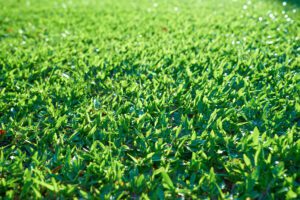Watering Your Lawn: Best Practices for Healthy Growth
Seasonal Lawn Care: Preparing Your Yard for Winter
Essential Tips for a Lush Green Lawn
A lush green lawn is every homeowner’s dream. It not only looks beautiful but also provides a safe and healthy environment for your family and pets. To achieve this, you need to take care of your lawn regularly by following some essential tips. Here are some of them:
1. Water your lawn properly – water it deeply once or twice a week instead of shallowly every day. This will help the roots grow deep and strong, making your lawn more resilient against drought and disease.
2. Mow your lawn at the right height – mow your grass to the recommended height for your type of grass. Short grass may look neat, but it can stress out your lawn and make it vulnerable to weeds and diseases.
3. Aerate your soil – aerating your lawn helps improve airflow and drainage, which in turn promotes healthier root growth. You can rent an aerator from your local hardware store or hire a professional to do it for you.
4. Use fertilizers wisely – applying too much fertilizer can harm your lawn just as much as not using enough. Follow the instructions on the package carefully and use a spreader to ensure even distribution.
5. Control weeds and pests – preventing weed and pest infestations before they start is always better than trying to treat them after they have taken hold. Consider using natural remedies like vinegar or corn gluten meal to control weeds, and use insecticidal soap to get rid of pests like aphids and mites.
Choosing the Right Fertilizer for Your Lawn: What You Need to Know
Fertilizing your lawn is crucial for its healthy growth and development. However, choosing the wrong fertilizer can cause more harm than good. Here are some things you need to know when selecting a fertilizer for your lawn:
1. Type of grass – different types of grass require specific nutrients, so choose a fertilizer that is formulated for your type of grass. For example, warm-season grasses like Bermuda and zoysia require high levels of nitrogen, while cool-season grasses like fescue and bluegrass need more phosphorus and potassium.
2. Time of year – apply fertilizer during the growing season when your lawn needs it most. Avoid applying fertilizer in late fall or early spring when your lawn is dormant.
3. Nutrient content – look for a fertilizer with a balanced ratio of nitrogen, phosphorus, and potassium (NPK). The first number on the label represents the percentage of nitrogen, the second number represents phosphorus, and the third number represents potassium. Choose a product with a balance that matches your lawn’s needs.

4. Application rate – follow the directions on the package carefully and use a spreader to ensure even application. Applying too little or too much fertilizer can both be detrimental to your lawn.
Watering Your Lawn: Best Practices for Healthy Growth
Proper watering is critical for maintaining a healthy lawn. Here are some best practices for watering your lawn:
1. How often should I water my lawn? – water your lawn deeply once or twice a week instead of shallowly every day. This encourages deeper root growth and makes your lawn more resistant to drought and disease.
2. When is the best time to water my lawn? – the best time to water your lawn is early morning or late evening when temperatures are lower and evaporation rates are slower. Avoid watering during the heat of the day when sunlight can burn your lawn.
3. How long should I run the sprinklers? – adjust your irrigation system to match the amount of water your lawn needs based on factors such as temperature, humidity, wind speed, and rainfall. Run your sprinklers until you see water pooling on the surface, then shut off the system and wait for the water to absorb into the ground before running it again.
4. Should I hand-water my lawn? – if you don’t have access to automatic irrigation, consider investing in a hose end timer or a watering wand to manually water your lawn. Hand-watering allows you to target specific areas where your lawn needs moisture without overwatering other parts.
Seasonal Lawn Care: Preparing Your Yard for Winter
Taking care of your lawn doesn’t stop when winter rolls around. In fact, preparing your yard for winter is essential for ensuring a healthy and vibrant lawn come springtime. Here are some steps you can take to prepare your lawn for winter:
1. Rake leaves and debris – removing fallen leaves and other debris from your lawn prevents fungus and bacterial growth, which can damage your turf.
2. Aerate your soil – aerating your lawn in the fall helps improve airflow and drainage, which in turn promotes healthier root growth.
3. Apply fertilizer – applying a low-nitrogen fertilizer in September or October can give your lawn a boost of nutrients before going dormant.
4. Water your lawn – continue to water your lawn until the ground freezes to keep your grass hydrated and promote healthy root growth.
5. Protect your plants – cover tender perennials and shrubs with mulch or burlap to protect them from harsh weather conditions.





